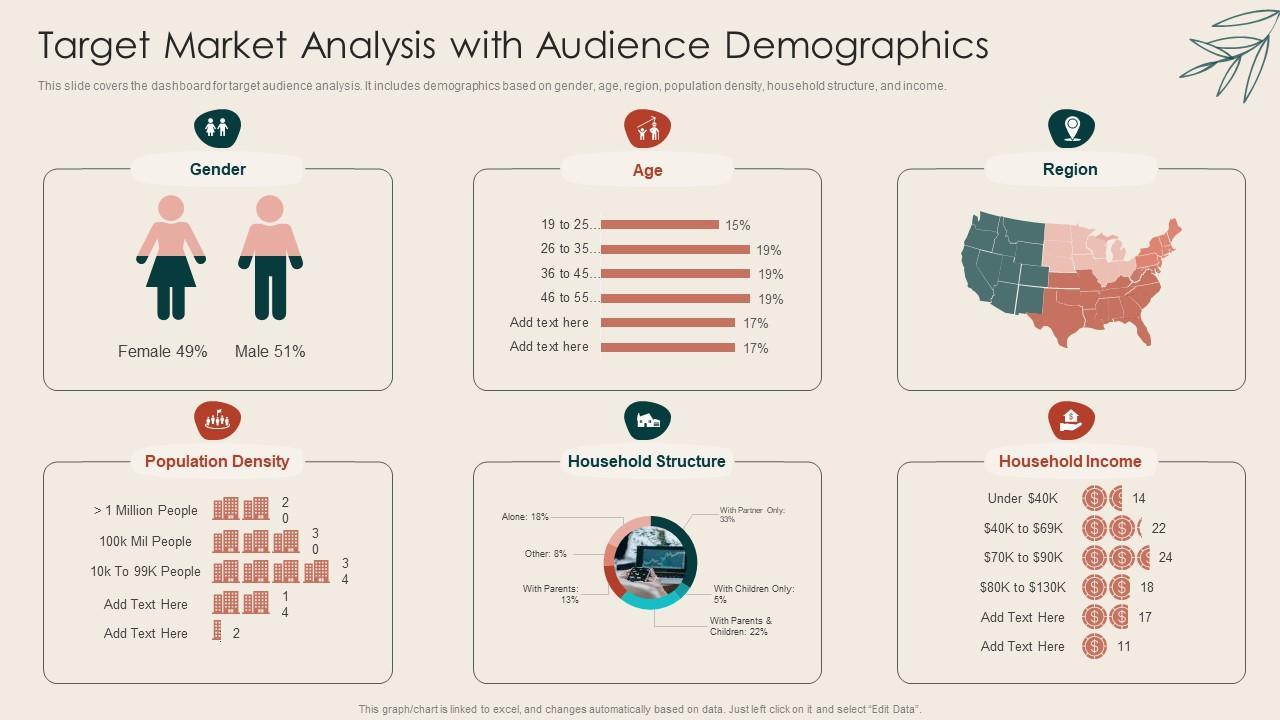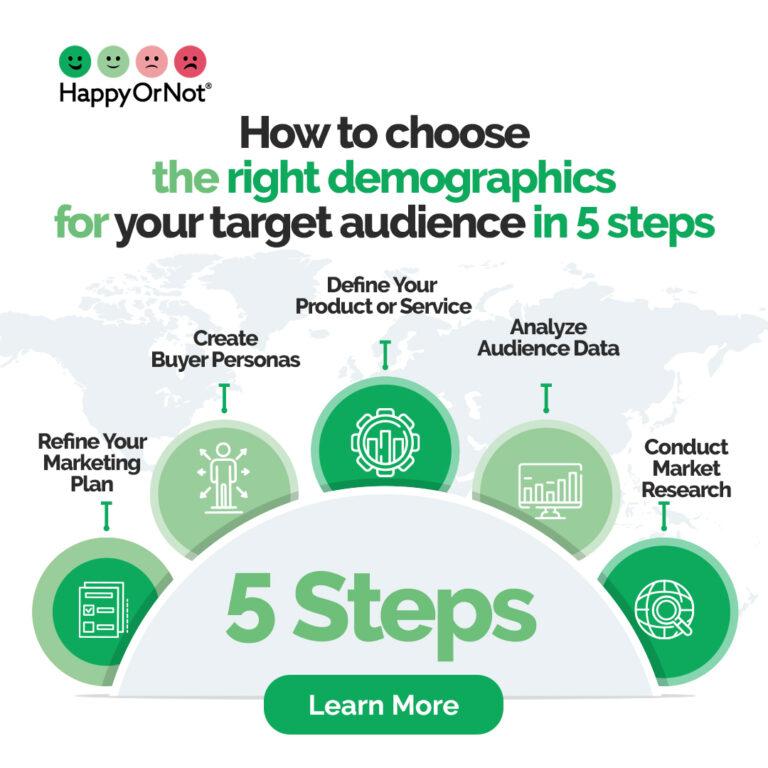
In a world awash with data and options, the art of marketing has evolved into a science of precision. At the heart of effective marketing lies an intricate dance between brands and their audiences, where understanding who is on the other side of the screen can mean the difference between fleeting interest and lasting engagement. “Decoding Influence: How Audience demographics Shape Marketing” invites readers to explore the multifaceted relationship between demographic insights and marketing strategies. By delving into the nuances of age, gender, location, and cultural background, this article aims to unveil the blueprint that marketers use to craft messages that resonate. Join us as we navigate the complex web of audience segmentation and discover how these vital factors not only shape campaigns but also redefine the landscape of consumer engagement.
Understanding Audience Demographics and Their Impact on Marketing Strategies
Recognizing the profound influence of audience demographics on marketing strategies is crucial for creating effective campaigns. Understanding factors such as age, gender, income, location, and education can greatly enhance a marketer’s ability to tailor their approach. As an example, marketing to Millennials may involve a heavy reliance on social media platforms, leveraging humor and authenticity, while targeting baby Boomers might necessitate a more traditional approach, incorporating emails and television advertising. Each demographic group has its unique preferences and behaviors that should be meticulously studied to ensure that marketing messages resonate.
Moreover, the impact of audience demographics extends to product development and promotional tactics. By analyzing demographic data, businesses can identify trends that align with consumer needs. For example, brands may consider the following points when crafting their strategies:
- Content Style: Different target markets prefer varied content tones—brand storytelling might engage younger audiences, while straightforward information may appeal to older consumers.
- Visual Elements: Color schemes and imagery should reflect the tastes and cultural references of the target demographics to capture attention effectively.
- platform Selection: Knowing which platforms are frequented by specific demographics can determine where to allocate advertising budgets, enhancing reach and engagement.
| demographic Group | Preferred Platforms | Typical Purchase Drivers |
|---|---|---|
| Gen Z | Instagram, tiktok | Sustainability, Authenticity |
| Millennials | Facebook, Twitter | Price, Brand Values |
| Gen X | Email, LinkedIn | Quality, Trustworthiness |
| Baby Boomers | TV, Facebook | customer Service, Reliability |

Tailoring Messaging: Crafting Content for Diverse Demographic Segments
In today’s dynamic marketplace, effective interaction goes beyond mere words; it requires a deep understanding of the audience’s unique characteristics and preferences. By tailoring messaging to speak directly to various demographic segments, brands can foster genuine connections and drive engagement. Some key considerations for crafting impactful content include:
- Language and Tone: Adjusting the vocabulary and conversational style to resonate with different age groups,cultures,or regions.
- identifying Values: Highlighting themes such as sustainability for environmentally-conscious millennials or family-centric values for more mature audiences.
- Visual Elements: Using imagery and design that appeal to the aesthetic preferences of specific demographics, from vibrant colors for youth to minimalist designs for professionals.
To illustrate the diverse needs of these segments, the following table captures essential demographic groups and their core messaging preferences:
| Demographic Segment | Preferred Messaging Style | Key Topics |
|---|---|---|
| Gen Z | Casual & Authentic | Social Justice, Technology |
| Millennials | Inspirational & Relatable | Travel, Experiences |
| Baby Boomers | Respectful & Informative | Health, Family |
By aligning brand messages with the preferences and values of each demographic segment, companies not only enhance their marketing effectiveness but also build loyalty and trust among their target audience.

Utilizing Data Analytics to Uncover Consumer Behavior patterns
In today’s competitive landscape, organizations are harnessing the power of data analytics to gain deeper insights into consumer behaviors and preferences. By examining various data points, such as purchase history, website interaction, and social media engagement, marketers can identify key trends that influence audience decisions. This valuable information acts as a lens through which businesses can see beyond mere sales figures, allowing them to understand the underlying motivations driving their customers.Essential aspects to consider include:
- Demographic Factors: Age, gender, income level, and education can all impact buying habits.
- Psychographic Insights: Lifestyle choices, interests, and values play a critical role in consumer preferences.
- Behavioral Patterns: analyzing patterns such as purchase frequency and brand loyalty helps tailor marketing strategies.
Visualizing this data in concise formats, using tables can significantly enhance understanding and facilitate decision-making. As an example, a breakdown of the audience by critical demographic segments can illuminate areas of opportunity. below is a sample portrayal of potential customer categories and their buying tendencies:
| Age Group | Preferred Products | Average Spend ($) |
|---|---|---|
| 18-24 | Tech Gadgets, Fashion | 150 |
| 25-34 | Home Goods, Fitness | 300 |
| 35-44 | Travel, Luxury Goods | 600 |
By continuously analyzing this data, businesses can stay ahead of market trends, refine their marketing efforts, and ultimately foster stronger connections with their audiences.in doing so,they are not only able to improve customer satisfaction but also enhance brand loyalty and drive enduring growth.

Building Authentic Connections: Strategies for Engaging Varied Demographics
To foster genuine interactions with your audience, understanding their unique characteristics is crucial. Each demographic brings distinct preferences, interests, and communication styles that can significantly influence engagement. When tailoring your approach, consider the following strategies:
- Research and Segment: Utilize data analytics to identify key characteristics of your audience segments.
- Personalized Messaging: Craft messages that resonate with specific groups, addressing their unique pain points and aspirations.
- Use Diverse Platforms: Engage with different demographics through their preferred channels, whether that’s social media, blogs, or podcasts.
- Interactive Content: Implement polls, quizzes, and live interactions to encourage feedback and foster a sense of community.
Additionally, leveraging the power of visual storytelling can bridge generational gaps, making your content relatable to a broader audience. Consider using various formats like videos, infographics, and user-generated content to enhance relatability and engagement. Here’s a rapid overview of how different age groups may respond to varied content formats:
| Age Group | Preferred Content Format |
|---|---|
| 18-24 | Short videos, memes |
| 25-34 | Podcasts, blogs |
| 35-44 | Infographics, webinars |
| 45+ | Newsletters, articles |
In Summary
As we navigate the intricate landscape of marketing, it’s clear that understanding audience demographics is not just beneficial—it’s essential. The layers of identity, preferences, and behaviors that make up our audiences provide invaluable insights for crafting targeted campaigns that resonate deeply and authentically. By decoding these influences, marketers can bridge the gap between product and consumer, creating connections that go beyond mere transactions.
In a world where personalization is paramount, leveraging demographic data can unlock the true potential of a brand’s message. It empowers businesses to engage with their audiences on a more meaningful level, driving not only customer loyalty but also a greater understanding of the diverse market in which they operate.
As we conclude our exploration into the interplay between audience demographics and marketing strategies, remember that each data point represents a unique individual with distinct stories and aspirations. To truly innovate in this field, we must embrace the complexity of our audiences and adapt our approaches accordingly. After all, the key to successful marketing lies not just in reaching out, but in genuinely connecting with the hearts and minds of those we aim to serve.